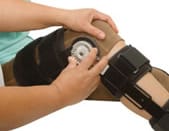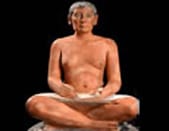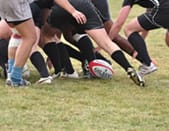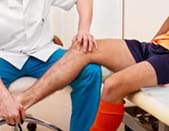Could finger length constitute an indication of the predisposition to knee osteoarthritis? The link is not obvious, yet researchers at Monash University (Australia) looked into the question and were able to demonstrate a relationship between the two factors.
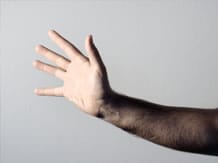
During their study1, the Australian researchers calculated the Manning index2 of each of the 14,500 adult to elderly participants. This index is given by the ratio of right-hand index finger (2R) to ring finger (4R) length, when the hand is laid flat. As the influence of various hormones on the length of these two figures is already known (men and women do not have the same mean Manning index3), they sought to demonstrate that the preponderance of the ring finger over the index finger could also represent an osteoarthritis risk factor. For this, they monitored the participants over a ten-year period and noted those suffering from severe knee or hip osteoarthritis (requiring arthroplasty).
The results obtained showed that a lower Manning index (right hand only) was associated with an increased risk of severe knee osteoarthritis, but not of hip osteoarthritis. Moreover, the researchers eliminated from the study any patients suffering from osteoarthritis of the fingers, as the deformation could alter the Manning index4, thus skewing the results. How though, can we explain this improbable relationship? The study's authors preferred a hormonal explanation: the hormones responsible for a lower Manning index have more negative effects on knee bone, cartilage and tissue development. Previous studies5-7 had already attempted to demonstrate this connection, though with varying degrees of success. We must now seek to understand the exact role of hormones in this phenomenon.
Sources :
1. Hussain S, Wang Yuanyuan, Muller D, and Al. Association between index-to-ring finger length ratio and risk of severe knee and hip osteoarthritis requiring total joint replacement Rheumatology, Department of Epidemiology and Preventive Medicine, School of Public Health and Preventive Medicine, Monash University, 2014;53:1200-1207.
2. Manning JT, Scutt D, Wilson J, Lewis-Jones DI. The ratio of 2nd to 4th digit length: a predictor of sperm numbers and concentrations of testosterone, luteinizing hormone and oestrogen. Hum Reprod 1998;13:3000-4.
3. Honekopp J, Watson S. Meta-analysis of digit ratio 2D:4D shows greater sex difference in the right hand. Am J Hum Biol 2010;22:619-30.
4. Haugen IK, Englund M, Aliabadi P, et al. Prevalence, incidence and progression of hand osteoarthritis in the general population: the Framingham osteoarthritis study. Ann Rheum Dis 2011;70:1581-6.
5. Zhang W, Robertson J, Doherty S, et al. Index to ring finger length ratio and the risk of osteoarthritis. Arthritis Rheum 2008;58:137-44.
6. Ferraro B, Wilder FV, Leaverton PE. Site specific osteoarthritis and the index to ring finger length ratio. Osteoarthritis Cartilage 2010;18:354-7.
7. Haugen IK, Niu J, Aliabadi P, Felson DT, Englund M. The associations between finger length pattern, osteoarthritis, and knee injury: data from the Framingham community cohort. Arthritis Rheum 2011;63:2284-8.






